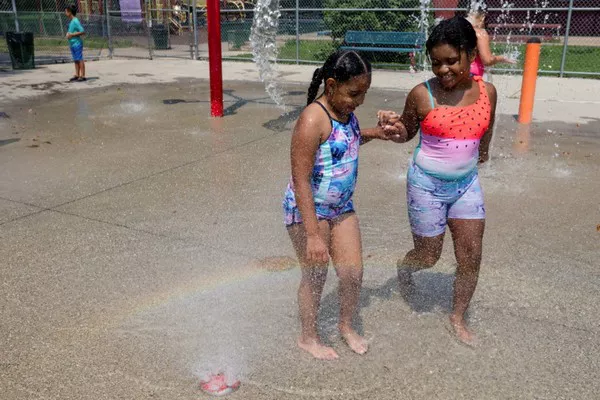OREGONIA, Ohio (AP) — The traditional bonfire ceremony at YMCA’s Camp Kern, where campers typically reflect on cherished memories by tossing notes into the flames, took an unexpected turn this year. With temperatures soaring to 92 degrees Fahrenheit (33 Celsius) and humidity levels stifling, the bonfire was deemed too risky, replaced instead by a smaller bucket for burning memory notes.
This adjustment underscores a broader challenge facing American summer camps amidst escalating climate change impacts. Heat waves starting earlier and lingering late into the night are forcing camp administrators to rethink outdoor activities essential for fostering social skills and connecting children with nature.
Tom Rosenberg, President and CEO of the American Camp Association, emphasized the seriousness of adapting camp programs to extreme heat conditions. “Extreme heat is a significant concern. We must carefully plan to ensure the safety and well-being of our campers,” he said, noting the ACA’s longstanding efforts to address climate change’s impact on camp operations.
Recent incidents highlight the dangers posed by heat-related illnesses among campers. In Connecticut, a dozen Girl Scouts required treatment in 2011, while in Florida, two children were hospitalized in 2015. Tragically, a 15-year-old Boy Scout succumbed to heatstroke during a hike in Texas in 2017.
According to a study funded by the ACA, the U.S. hosts over 20,000 unique camp operations annually, serving 26 million campers. Grace Robiou from the EPA’s Office of Children’s Health Protection stressed that children are particularly vulnerable to heat due to their developing bodies and reduced self-awareness.
Dr. Alison Tothy, a pediatric emergency medicine physician, highlighted the physical strain on children during camp activities. “Kids exert themselves during activities like climbing and obstacle courses, making them prone to overheating,” she said, noting the increased vigilance required among camp staff.
At Camp Kern, efforts to mitigate heat risks include extended indoor sessions, enhanced water-based activities, and increased access to cooling measures like air conditioning and shaded areas. Todd Brinkman, the camp’s executive director, acknowledged the rising costs associated with implementing these measures, exacerbated by a national lifeguard shortage and escalating insurance premiums due to extreme weather events.
Despite these challenges, campers like Alex Reiff, 12, continue to relish the outdoor experiences. “Climbing makes you feel active, even if you’re sweating,” he remarked, reflecting on the balance between physical exertion and heat management.
For Lizzy Johnson, a former camper turned counselor, the evolving strategies at Camp Kern reflect a necessary shift. “I cherish the memories of camp from my childhood, but the increasing discomfort from heat is a new reality,” she said, underscoring the adaptive responses now integral to camp operations.
As summer progresses, the adaptation of summer camps to extreme heat serves as a poignant reminder of the evolving impacts of climate change on childhood experiences and outdoor education across America.

